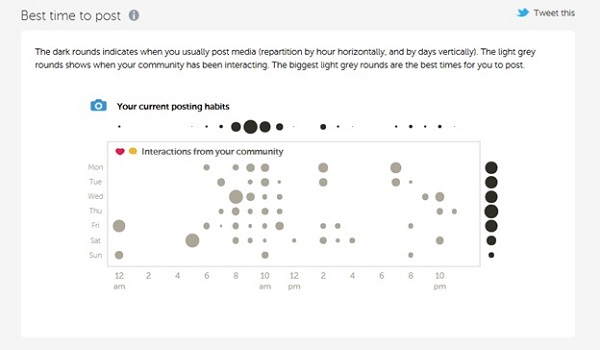Blog
Platform Dependent and Independent Social Media Mistakes to Avoid

For all businesses that have a digital presence, social media marketing is a must. But mistakes lower the chances of being successful with it.
No matter how powerful your marketing techniques are and what online tools you are using, nothing can bring you desired results unless you stop committing mistakes.
Quantity or Quality?
Marketers often find themselves in a dilemma regarding whether they should prioritize quantity or quality. A quantity-driven social marketing approach advocates using all social channels. The qualitative approach is doing extensive marketing around one or two channels.
It’d be a mistake to follow either of the two approaches. The right thing to do would be to follow a new approach combining the two. Both approaches are in the extreme and marketers should follow strategies that fall in the middle.
They first need to make a list of all the channels that they are going to use. Next, they need to have brainstorming sessions to produce unique marketing ideas and connect those ideas to the platforms.
Strategies and platforms
Applying customized strategies for each social channel is resource-intensive. But if you can implement it, then it will yield excellent returns.
Here’s a detailed analysis of the mistakes in respect of the channels:
Mistakes on Facebook
The common mistakes that marketers commit on Facebook are
#Not posting consistently: Fans expect brands to post regularly. If a brand doesn’t post anything for a while, fans will lose connection, which could be disastrous for a campaign. That’s why, you should keep posting on Facebook from your brand page.
#Not using visual content: It’s been found that visual content triggers outstanding engagement. Besides, users on Facebook are hungry for such content. All brands are advised to post images, banners and videos regularly.
#Apt volume: Some users prefer short updates, while some prefer longer ones. It's better to first get an idea of what your fans like. If they like short updates, don't post lengthy ones.
Mistakes on Twitter
#Hashtag optimization: Some marketers make excessive use of hashtag and some marketers underuse them. Both over-optimization and under-optimization are bad for a campaign.
#Automated tweeting: As social media is becoming tool-oriented, you may have to pre-schedule tweets. Make sure the tweets are relevant, especially if they are replies to customer queries.
#Tweeting too often: You should tweet the same link twice in a day keeping a six-hours gap between them. And the second tweet should have different texts.
Instagram mistakes
#Irrelevant images: In 2015, daily number of images shared on Instagram was 80 million. Photos shared by you may get lost in the crowd unless those photos are relevant.
#Image quality: The images you are sharing will introduce your brand to Instagram users. So make sure you are sharing high-quality images. The lighting, size and resolution of the images must be flawless.
#Product photography: Product photos must be taken by professionals. Such photos have a higher quality look to them, which stock images or the ones clicked by amautures lack.
#The timing: Try posting at the right time. How would you know what’s the right time? See the image below:

The benefit of posting on the right time is the majority of users will see your post and maybe engage with you.
LinkedIn mistakes
LinkedIn yields better results for B2Bs than B2Cs, but it doesn’t disappoint B2Cs if a marketer can avoid the following mistakes:
#Not growing the network: The success in LinkedIn marketing depends on growing the network. The more people you can connect to, the better is your prospect.
#Brand profile: Unlike other networks, individual profiles carry more weight on LinkedIn than brand profiles. Brand pages should be there, but personal profiles should be given more importance.
#LinkedIn groups: Joining a LinkedIn group and being active there don’t increase the odds of selling something, which is why the idea is often dumped. But groups help in networking and authority building.
#Brand page image: Don’t neglect the brand page. Optimize it so that it looks stunning. Add a custom banner image for better look and feel.
Mistakes on Pinterest
Similar to Instagram, Pinterest is used primarily for sharing images. The differences are Pinterest is extensively used by brands and it is undergoing insurmountable growth.
Here are the mistakes to avoid:
#Not repinning: Don’t forget to repin the pins from other users. Almost 80% pins are repins. Unless you repin the images pinned by others, they won’t repin your images.
#Stock images: Never share stock photos. Always share original ones. This will give you credibility and make users interested in your product line.
#Being gender agnostic: More than 80% Pinterest users are female, which indicates brands that sell women’s products have more chances of success on Pinterest.
#No image description: While visual content does send the message across, there’s no harm if it’s accompanied by few lines of texts. Add description to the images that you are pinning and make sure the descriptions are brief.
Platform independent mistakes
All the mistakes discussed here so far are platform-dependent. Here are some mistakes that are platform-neutral:
#No link in bio: The bio section should have your homepage link or deep links. While link insertion in the bio is important, make sure the links are naturally inserted.
#URL shortener: A study done by Buddy Media in 2011 showed Facebook posts with complete web URLs get 3 times more likes than posts with shortened URLs. The study is still relevant because shortened URLs often don’t look like URLs. Use shortened URLs only on Twitter.
#Don’t push: Don’t push anyone to buy anything. Social networks are not marketplaces. The idea is to build a network there and then cash out on it. But pushing users to buy something on social platforms is a huge mistake.
The reason you see many brands complaining that their social media strategy is a failure is they are making some or all of the mistakes stated here.
For success, steer clear your campaign from these mistakes.
Image Courtesy: pixabay.com

Adam Frankel
Adam Frankel is President and CEO of Frankel Interactive, a leading South Florida digital agency specializing in custom websites development, ecommerce development and digital marketing. For over 15 years he's been working with businesses and government agencies to bring their organizations online in order to build brand awareness, communicate with stakeholders, generate leads and drive sales. His belief is that all businesses need to keep up with technological trends including the continual transition from desktop to mobile, search engine algorithms changes, and social media engagement. His goal is to help them implement strategies to successfully compete in an ever crowding digital marketplace. When he isn't touting the benefits of web-based marketing, he enjoys fishing and spending time on the waters surrounding Miami with family and friends.
